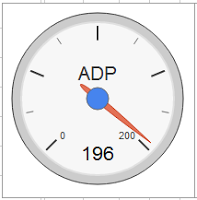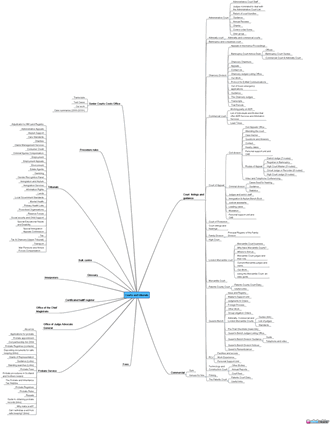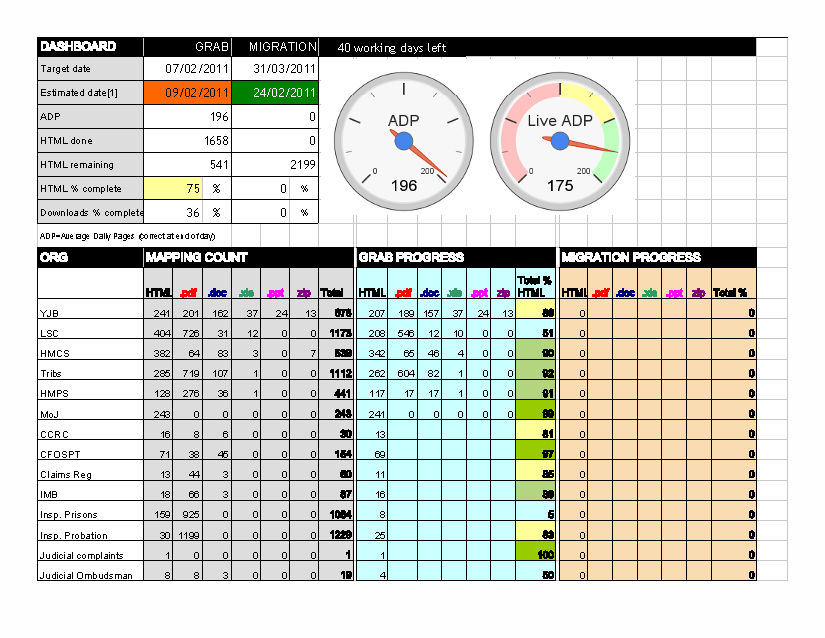 I’ve been using collaborative documents quite heavily for the past few months of the website convergence project, working on documents with over 20 other people. For me, making changes to a document and seeing changes that other people are making at the same time is the height of collaboration. It’s the best that it gets in my workplace, anyway.
I’ve been using collaborative documents quite heavily for the past few months of the website convergence project, working on documents with over 20 other people. For me, making changes to a document and seeing changes that other people are making at the same time is the height of collaboration. It’s the best that it gets in my workplace, anyway.
Twenty years ago I could have said that our Novell Netware office network aided collaborative working. Today I could say that our shared network drive and our Huddle workspace aid collaboration. And while the process of checking out a document, making changes and checking it back in so that the next person can work on it could be termed as collaborative, I don’t think that this is really in the same league as some of the cloud-based systems available today.
Google docs
Today I can add, remove and change content, make comments and mark up notes in a document while being able to see live updates from other people who are doing the same. I can chat with them onscreen and see what changes they have made and are making. And I always know that I’m working on the right version of the document, because the document is live. I don’t have to remember to save it. And constant system crashes don’t mean that I lose my work.
For the past few months I’ve been using a Google docs spreadsheet to work on the information architecture phase of the project. I can work on it from home or the office or from my iPhone when out and about.
The master IA spreadsheet now has 25 tabs (thumbnail of one displayed) and has grown organically through being worked on by different people at different stages of the project.
Content audit
The spreadsheet started out as a high-level content audit, with a tab for each of the main websites due to converge into the new structure. I shared the sheet with team colleagues, stakeholders and website managers and used it to write notes and comments and determine which areas of content would be included in the move to a single website.
Content inventory
I then expanded the high-level headings of the audit, detailing all the HTML, PDF, DOC, XLS files etc., turning the audit into a full blown content inventory. The file and asset count from this inventory fed into the main project plan to inform time and resource planning requirements for the content scraping and migration phases of the project.
Content mapping
To make things easier in the final content migration process, I am using the spreadsheet to map over existing and incoming content to the new IA structure. The migration team will use this to manage the process of creating pages in the new site from the pre-scraped content repository.
We’re also using the data from the spreadsheets to write scripts for creating file structures on the development server and scripts that will automatically grab binary documents from the converging websites, ready to include in the new site build. Incidentally, we haven’t been able to beat the procurement red tape and land ourselves a decent CMS system in time to practically complete the project. So we’re using the tried and tested intranet hybrid setup of our existing web 1.0 CMS for news delivery, and good old Dreamweaver for the remainder of the site. A temporary solution.
Content scraping and migration
At the same time as I’m still working on the final stages of the content mapping, another team are using the spreadsheet as a register to manually scrape the websites and store files in a temporary repository. The team are recording their progress on the sheet and noting any issues, which are all instantly visible and reflected in the dashboard.

Dashboard
The first tab in the spreadsheet shows the dashboard, giving us a live overview of progress including content audit, scrape and migration counts, plus live predictions of milestone completion dates, traffic-light colour-coded. It’s been a great visual tool for keeping interested parties informed of up to the minute progress and for keeping the team motivated with goals and accomplishments. What’s ADP? Average Daily Pages; a live metric showing how much content the team are currently scraping. Just how much fun can you have with a spreadsheet?
Other tools
But it’s not just Google tools that are floating my boat. There are many other fab sites that provide collaborative workspaces, often for free, if only for a trial period.
A massive spreadsheet of rows doesn’t help to visualise a site structure. I’ve been using Mindmeister, a mind mapping tool, to work up specific areas of the IA. What’s cool with this is that you can share a map with someone and then work on-screen together while discussing over the phone. Great for when you don’t work in the same office as your colleagues.

When time is tight on a project, communication is key to helping a team pull together. These new-found tools for the team have proved extremely helpful in keeping the project rolling along.I’m also tinkering with Pidoco, an online, rapid wireframe/prototype mockup tool. Again, you can share and work collaboratively and it also promises remote user testing.

